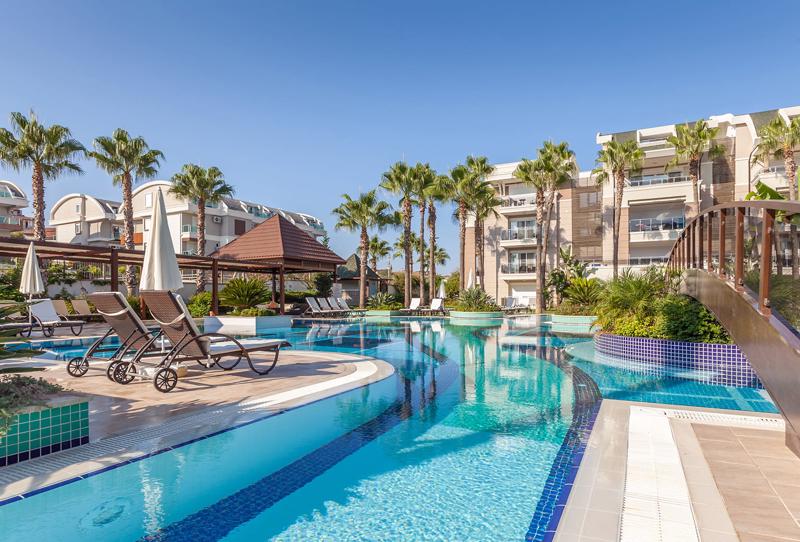Vietnam possesses the fundamentals for developing hospitality properties, including the rise of its middle class, increasing accessibility to travel thanks to improved infrastructure, and the country’s openness to international trade, which drives business travel, events, and conferences, etc. Investing in hospitality real estate is therefore a smart bet, according to Mr. David Jackson, CEO of Colliers Vietnam.
Though Vietnam’s tourism recovery somewhat lags behind other Asian markets and uncertainties remain due to the economic slowdown, not to mention the freezing of the hospitality real estate market, Colliers nonetheless believes that pockets of opportunities are present in Vietnam.
In 2019, occupancy rates in the 30,000 or so hospitality establishments around the country, such as hotels, resorts, and villas, stood at 52 per cent.
Over the past decade, hotel supply in Vietnam has grown three-fold and roughly 100 new hotel projects are in the pipeline over the next three years. Mid-scale and luxury room supply grew the strongest, up 6.7-fold from 2009 to 2022, while villas and resort shophouses increased 20 per cent and 34 per cent, respectively, year-on-year in 2022. The number of international hotel brands is expected to double over the next three years, from 127 in 2022 to 261 in 2025.
Mr. Jackson noted that there is an increasing market concentration, where domestic players that dominate ownership of hospitality property cooperate with reputable international hotel brands to standardize and raise the bar on quality in hotel services and boost the value of hospitality properties.
M&As and cooperative activities, though slowing last year, are expected to see a deal-making rush in the quarters to come. With capital waiting to be disbursed and favorable valuations in place, foreign investment funds are making a smart bet to expand their market share before hotel revenues meet their full potential during the recovery.
For instance, agreements have been announced by Sun Group and IHG, Accor, Ennismore, and TNR, and BRG and Hilton. Recently, the issuance of Decree No. 10/2023/ND-CP on ownership certificates, with a term for properties built on commercial and service land, set initial conditions for the revival of the condotel, office-tel, and resort villa markets around Vietnam, promising a growth spurt in the years to come.
“For now, smart moves should include improving EBITDA, IRR, Cap rates, etc., with minimal investment and focusing on superior marketing, revenue management, and distribution,” said Mr. Morgan Ulaganathan, Head of Asset Services & Hospitality Advisory at Colliers Vietnam.
He added that the development of hospitality real estate projects should weigh up ESG factors to ensure Vietnam’s long-term global tourism competitiveness. “Last but not least, targeting the right mix of domestic and international tourists is critical to optimizing occupancy and room rates.”
As the world began to reopen and people decided to make up for lost time due to Covid-19, the “revenge travel” trend combined with personal savings made during lockdown in 2021 drove an upsurge in travel among Vietnamese in 2022, with 101.3 million domestic travelers, according to the Vietnam National Administration of Tourism (VNAT). However, Vietnam was also among markets in Southeast Asia with the lowest number of foreign tourists last year.
The absence of Chinese tourists is not the only factor, as Vietnam’s tourism sector not thriving to the same degree as neighboring countries had been a topic of much debate prior to the pandemic. In 2019, Vietnam had a tourist-return rate of 10 per cent; much lower than in Thailand (82 per cent) and Singapore (89 per cent). The figure even fell to 5 per cent in 2022.
Besides an over-dependence on certain tourist source markets like Russia and China, for example, problems also lie in visa policies and long-existing bottlenecks in the sector such as uneven transport and tourism infrastructure, and a lack of variety, distinctive positioning, well-executed destination marketing overseas, and human resources post-pandemic.
However, potential looms large in the mid to long term. At the national level, Vietnam has set a target of fully recovering its tourism sector by 2025, with 18 million international arrivals expected out of a total of 134 million tourists. The country aims for 195 million tourists by 2030, including 35 million foreign visitors, with a diversification in source markets to include India, the Middle East, Europe, Australia, New Zealand, Canada, and the US.
There are also multiple discussions in the country on improving the quality of tourism and developing new models such as wellness tourism, eco-tourism, medical tourism, MICE, and bleisure (business leisure). Vietnam has all it needs for tourist attraction thanks to its beautiful natural landscapes, cultural richness, and gastronomic delights, from street food to modern cuisine.
“The key is quality and standardization of tourism services without losing the authenticity of Vietnam, to cater to the new travel tastes of an increasingly affluent population, both domestically and internationally,” said Mr. Ulaganathan.









 Google translate
Google translate